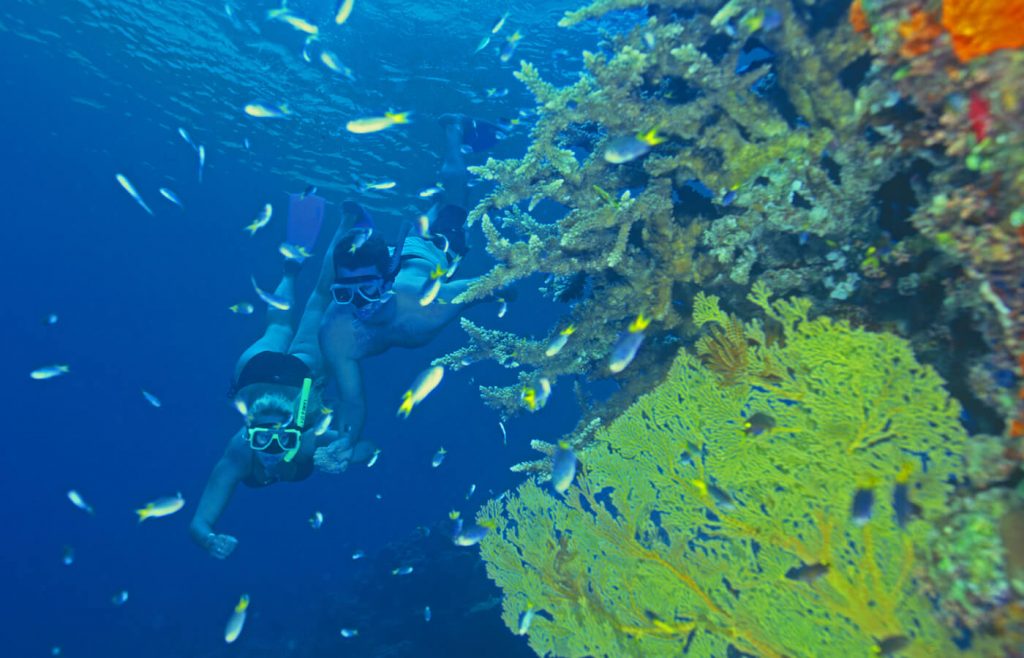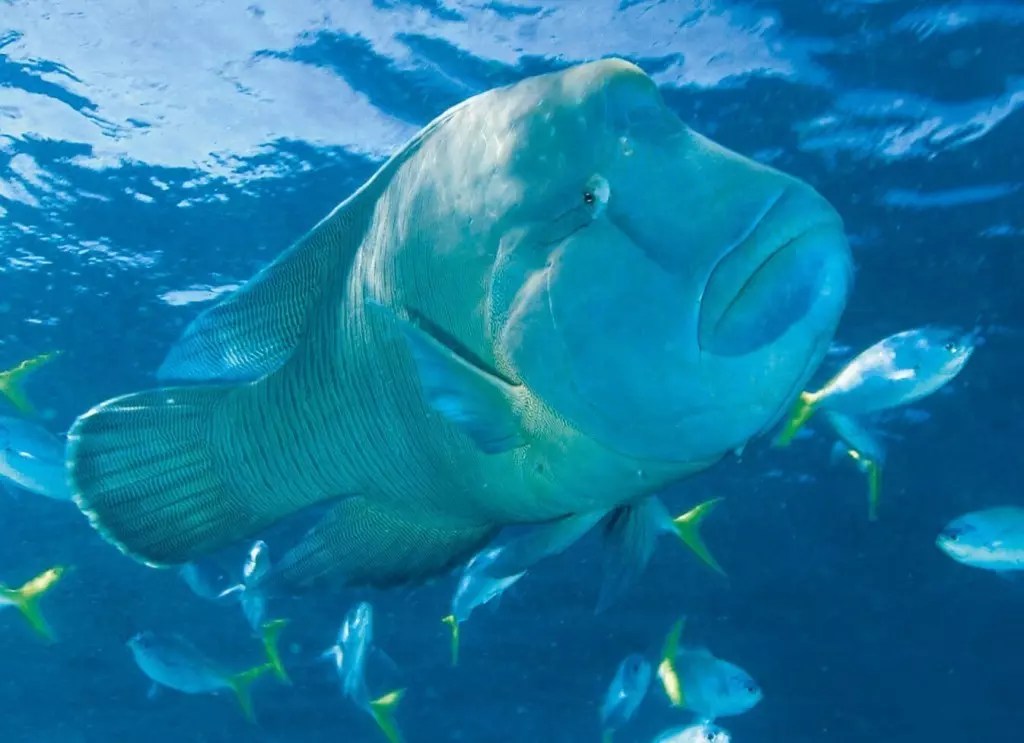About Whitsunday Islands
With over 3000 individual reef systems, 600 islands and 300 coral cays stretching from the most northeastern part of the Queensland coast all the way down to Bundaberg, it’s easy to see why millions of visitors come each year to witness the beauty that is the Great Barrier Reef.
The Great Barrier Reef is World Heritage listed and is one of the seven natural wonders of the world. There are two types of the reef; fringing reefs which are formed around the islands and the mainland and the outer reef which forms a protective “barrier” further offshore. Both are abundant with marine life and hold spectacular beauty and biodiversity.
The Whitsundays and Great Barrier Reef
Google Map
Corals are the building blocks of the reef. Quick reef facts;
- Many individual coral polyps aggregate in genetically identical colonies. This is what we know as a “coral reef”.
- Corals secrete a calcium carbonate exoskeleton which is left long after a coral has died.
- Some corals can catch small fish and plankton using stinging cells on their tentacles however most obtain the majority of their energy and nutrients from zooxanthellae (single-celled dinoflagellates) that live within their tissues. This is why most corals on the Great Barrier Reef require sunlight and prefer to grow in clear, shallow water.
- The foundations provided by coral reefs provide habitat and feeding grounds for an abundance of life.
But it is not just the reefs that are important. The mangroves around the islands and on the mainland coasts provide important nursery grounds for fish species and work as filters, trapping sediment and improving water quality. The seagrass meadows provide important habitat for juvenile fish before they head out to the reefs or ocean and are a vital food source for marine life including dugongs and mature marine turtles.
There are lots of things to see above and below the water. The Great Barrier Reef Marine Park is dotted with hundreds of tropical islands and includes some of the world’s most beautiful beaches. Certainly, a location not to be missed when visiting Australia.
The Great Barrier Reef Marine Park is under threat from climate change, poor water quality from land-based run-off, impacts from coastal development and illegal fishing. In recent years major storms and floods have affected an ecosystem already under pressure. Crown-of-thorns starfish outbreaks and marine debris are also affecting the Reef.
Coral bleaching is a well-publicised event that has occurred in some coral species along the Great Barrier Reef that are not able to withstand spikes in ocean temperatures. The most recent bleaching events were in 2016 and 2107 and luckily the Whitsundays reefs were largely unaffected.
The Great Barrier Reef Marine Park Authority (GBRMPA) warns that in the long-term, ocean acidification is likely to be the most significant impact of a changing climate on the Great Barrier Reef ecosystem. Quick Facts:
- climate change is the biggest threat to the reef
- The average annual temperatures are getting hotter
- the oceans are acidifying
- sea levels around the globe on average are rising
- cyclone intensity is predicted to increase however frequency is likely to decrease.
This is why Red Cat Adventures is striving for environmental excellence. See our Ecotourism page for more info.
The Great Barrier Reef Marine Park Authority provide regular video updates on the health of the Reef. Check out their latest update here.

The Whitsundays
Located at the “Heart of the Reef”, the Whitsundays is known as the gateway to exploring the Great Barrier Reef. The Whitsundays area of the marine park is made up of 74 islands, most of which are uninhabited. Whitsunday Island is the largest of the islands and home to Whitehaven Beach, a 7 km long beach is famous for its crystal clear waters and perfect 98% silica white sand. Voted number one beach in the Australia and best beach in the South Pacific in the 2016 TripAdvisor Traveller’s Choice Awards and the second best beach in the world in 2017 by FlightNetwork, Whitehaven Beach is one location not to be missed when visiting the Whitsundays.
Airlie Beach is the main coastal town centre and the location that tours to the reef depart from. The Whitsundays local airport, Proserpine Airport, is just 30 minutes’ drive away from Airlie Beach, making it easy for travellers to visit. Airlie Beach has a diverse range of accommodation to suit any traveller. The town boasts many restaurants, cafes and bars. Airlie Lagoon is a 140m x 40m saltwater swimming lagoon. Admission is free and features BBQs and lifeguards in the precinct seven days a week.
The Whitsundays has many spectacular places to visit on the mainland including Conway National Park. The Honeyeater lookout walk has a view not to be missed for the active traveller. Visitors can see saltwater crocodiles in their natural habitat and get up close and personal with native wildlife on a variety of local tours.
The Whitsundays Marvellous Marine Life
Six of the seven species of marine turtle that can be found around the world exist on the Great Barrier Reef and regularly visit the Whitsundays. Turtles nest from November to February and hatchlings start emerging from January to April. Unfortunately all of our turtle species are listed as either endangered vulnerable which means that they may become endangered if threats continue. This is one of the reasons why Red Cat Adventures is dedicated to a Green Wave Policy to ensure that the impact of our operations is minimal and we are doing everything we can to conserve the reef and the amazing creatures its supports.
The waters of the Great Barrier Reef are visited annual by migratory species including the humpback whale which can be seen from June to September when they seek warm protected waters to give birth to their calves before heading south again for summer. Guests on Red Cat trips regularly site these majestic creatures on our tours in winter months.
Other large animals that can be seen in the Whitsundays include mammals the snubfin and bottlenose dolphin and dugongs. Did you know that the Great Barrier Reef has one of the world’s most important dugong populations!
The Great Barrier Reef is home to over 130 species of rays and sharks including reef sharks, tiger sharks, wobbegong, earning their name from the Aboriginal word for shaggy beard due to their shaggy appearance and rays including manta rays. Although sharks do inhabit our waters the chance of an encounter on tours is minimal as sharks usually are most active at dawn and dusk.

“George” the local Humphead Maori Wrasse
Traditional Owners
The traditional owners of the Whitsunday islands and surrounding areas are the Ngaro people, an Aboriginal seafaring tribe. Archaeology shows that the Ngaro people inhabited the Whitsunday islands at least 8000 years prior to the Europeans arriving in 1770. There is a trail through the Whitsundays Islands called The Ngaro Sea Trail. The trail is made up of small bushwalks on different islands and visits significant cultural sites including caves with indigenous rock paintings.
A huge array of events attract visitors to the Whitsundays including the annual Great Barrier Reef Festival, Airlie Beach Festival of Music and, for the sailing enthusiasts, you may like to time your trip to coincide with Race Week.
